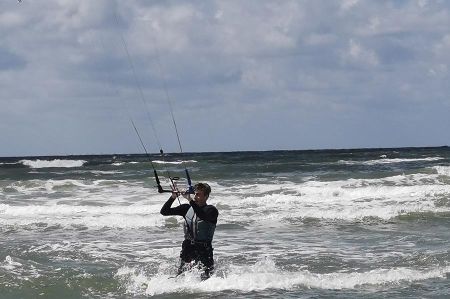Technical terms for kitesurfing IJmuden near Amsterdam
- Written by Portal Editor
It was and is always fascinating to watch active kite surfers on the beach, like again a few days ago on the ever-long sandy beach of IJmuden on the coast of Amsterdam.
After an encounter on the beach in front of Spiekeroog, then again in the Bay of Rewa in Poland, we had dealt several times with this fast, fascinating sport that we were now about to encounter again.
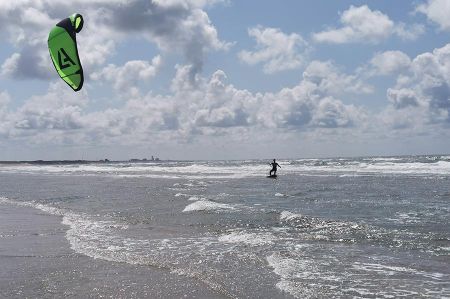 A few first photos were quickly taken when one of the kite surfers suddenly came directly towards us. He asked for copies of the photos because he was hardly able to take photos of himself while surfing. Stan, that's his name and still a beginner, already had a good handle on the kite, so that the first jumps were possible, which we should record if possible. Unfortunately, we didn't have the right equipment with us, so we were only able to take a few cell phone photos.
A few first photos were quickly taken when one of the kite surfers suddenly came directly towards us. He asked for copies of the photos because he was hardly able to take photos of himself while surfing. Stan, that's his name and still a beginner, already had a good handle on the kite, so that the first jumps were possible, which we should record if possible. Unfortunately, we didn't have the right equipment with us, so we were only able to take a few cell phone photos.
But said, done. However, the strong wind and the waves also meant that his strength quickly diminished, which is why he asked for leniency on the beach a little later. We quickly became engrossed in the conversation and learned some terms that were new to us, reason enough to mention them here.
Air time
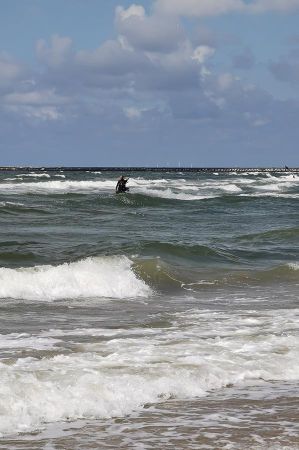 Duration of a jump. This is usually a few seconds. If the wind conditions are good, the flight duration can be in the double-digit second’s range.
Duration of a jump. This is usually a few seconds. If the wind conditions are good, the flight duration can be in the double-digit second’s range.
Aspect ratio
The ratio between width and height of the kite (varies for common kites between high aspect ratio of 6.0 and low aspect ratio of 3.0)
Bladders
The inflatable plastic tube that is located in the tubes and is inflated before the kite is launched. The pressure depends on the ambient temperature and the water temperature. In strong sunlight and high air temperatures, the bladder can burst even without external influence if it has been inflated too much. However, if you put too little pressure into the tubes, the kite will not develop a profile at all, or the air in the tubes will cool down so much when it comes into contact with the water that the kite will lose its profile and can no longer be launched without outside help.
C-kite feeling
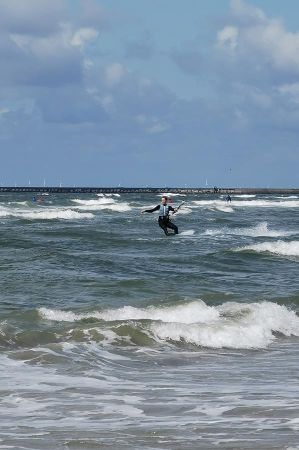 This refers to the advantages of the C-Kite's direct control behavior and low holding forces. Manufacturers are increasingly trying to transfer these positive properties to newer kite models (e.g. Delta kites), which have unfortunately lost some of the C-kite feeling by improving the depower effect and other safety aspects.
This refers to the advantages of the C-Kite's direct control behavior and low holding forces. Manufacturers are increasingly trying to transfer these positive properties to newer kite models (e.g. Delta kites), which have unfortunately lost some of the C-kite feeling by improving the depower effect and other safety aspects.
High end
Strong Wind Characteristics – The high-end characteristics of a kite include how a kite – relative to its size – behaves in strong winds. A kite with a good high-end offers good pulling power in high winds and can still be steered in a controlled and safe manner.
Low end
Light wind characteristics – As the term suggests, the low-end characteristic is the opposite of the high-end. A kite with a good low end, develops respectable pulling power and good steering behavior in - for its size - little wind.
Leading Edge
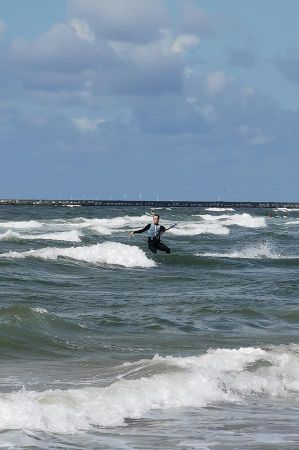 The leading edge refers to the leading edge of the kite, i.e. its front edge. This is where the front tube of the tube kite is located.
The leading edge refers to the leading edge of the kite, i.e. its front edge. This is where the front tube of the tube kite is located.
Trailing Edge
The trailing edge is the opposite of the leading edge and represents the trailing edge of the kite. The trailing edge is the edge over which the wind leaves the kite or last touches it. So it is at the end of the kite. Kite manufacturers usually deliberately reinforce this trailing edge with additional material and/or by folding the material and adding additional seams. This is necessary to avoid stretching of the fabric and to improve flight characteristics.
New school
The “New School” includes the repertoire of wakeboarding tricks in which the kite is ridden unhooked. This means that the rider unhooks the chicken loop from the harness before the trick and is only connected to the kite via his hands on the bar and the safety leash. This is the basis for some jumps and tricks that would not be possible if hooked (e.g. air pass or handle pass).
Old school
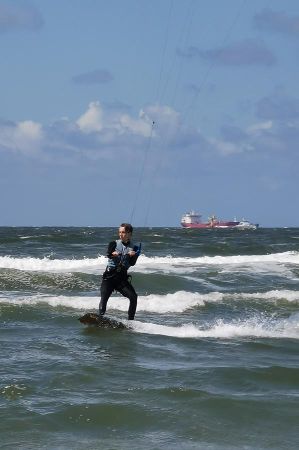 Riding and jumping in the “old school” style that has existed since the beginning of kitesurfing and in which the rider is hooked.
Riding and jumping in the “old school” style that has existed since the beginning of kitesurfing and in which the rider is hooked.
Projected area
The area of the kite cloth that is blown by the wind and is therefore aerodynamically effective.
Barn
The stall occurs when too little wind flows over the kite's profile and the force of the suction that keeps the kite in the air becomes less than its own weight. The kite no longer develops any traction and then falls to the surface. A special form of this is the so-called “backstall”, which occurs when the kite is very low in the wind window and the angle of attack of the kite becomes so large when the bar is tightened that the wind no longer pulls the kite up, but pushes it down. the kite overturns and ultimately crashes. This is a common beginner mistake. A “front stall” is caused when the kite flies over the surfer. This happens when the kite is flown from a position deep in the wind window with a lot of momentum to the edge of the wind window (usually to the 12 o'clock position). The result is a stall and the kite falls uncontrollably onto the water.
Wave
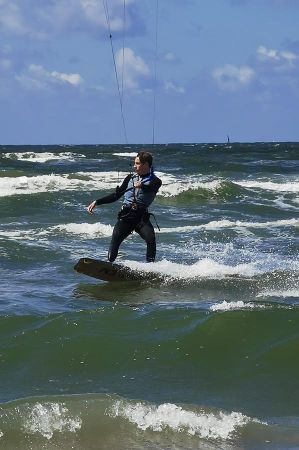 A discipline that combines the elements of kitesurfing with those of surfing. The surfer can be pulled out to sea with the support of a kite and then rides the waves there. The kite is then brought to the edge of the wind window, where it can hardly generate any pulling forces and has the least impact on the surfer on the wave. Of course, the advantages of the kite also give the surfer other options such as driving against the waves and using them as ramps.
A discipline that combines the elements of kitesurfing with those of surfing. The surfer can be pulled out to sea with the support of a kite and then rides the waves there. The kite is then brought to the edge of the wind window, where it can hardly generate any pulling forces and has the least impact on the surfer on the wave. Of course, the advantages of the kite also give the surfer other options such as driving against the waves and using them as ramps.
Wakestyle
A discipline in which tricks that originally come from wakeboarding are performed while kiting. The tricks are mostly worked out.
Stan asked us to send the photos by email and gave us his email address. Despite adjusting the address several times, it was unfortunately not possible to send the pictures; somehow there was an incorrect email address. Now that this article is online, there is still a chance that someone knows Stan and might be able to help. We would be happy if he could still receive his photos.
Thank you for that.
Please read as well:
